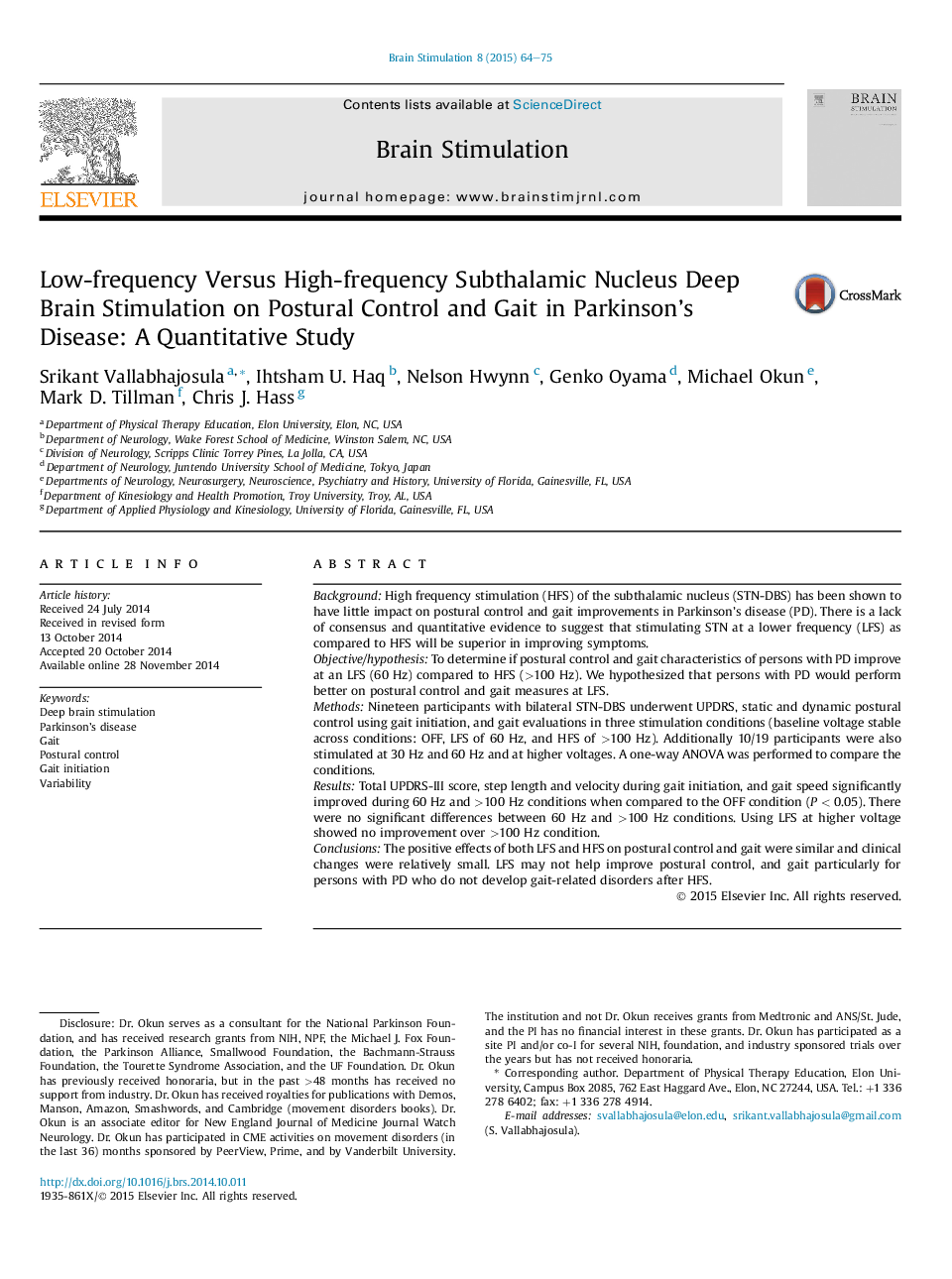| کد مقاله | کد نشریه | سال انتشار | مقاله انگلیسی | نسخه تمام متن |
|---|---|---|---|---|
| 3038748 | 1184668 | 2015 | 12 صفحه PDF | دانلود رایگان |

• Does low frequency stimulation improve postural control & gait in Parkinson disease?
• Performances with low and high frequency stimulations were largely similar.
• Both were similar to no stimulation performance for static postural control measures.
• Both were better than no stimulation results for dynamic postural control and gait.
• Low frequency may not help those with no gait issues post high frequency stimulation.
BackgroundHigh frequency stimulation (HFS) of the subthalamic nucleus (STN-DBS) has been shown to have little impact on postural control and gait improvements in Parkinson's disease (PD). There is a lack of consensus and quantitative evidence to suggest that stimulating STN at a lower frequency (LFS) as compared to HFS will be superior in improving symptoms.Objective/hypothesisTo determine if postural control and gait characteristics of persons with PD improve at an LFS (60 Hz) compared to HFS (>100 Hz). We hypothesized that persons with PD would perform better on postural control and gait measures at LFS.MethodsNineteen participants with bilateral STN-DBS underwent UPDRS, static and dynamic postural control using gait initiation, and gait evaluations in three stimulation conditions (baseline voltage stable across conditions: OFF, LFS of 60 Hz, and HFS of >100 Hz). Additionally 10/19 participants were also stimulated at 30 Hz and 60 Hz and at higher voltages. A one-way ANOVA was performed to compare the conditions.ResultsTotal UPDRS-III score, step length and velocity during gait initiation, and gait speed significantly improved during 60 Hz and >100 Hz conditions when compared to the OFF condition (P < 0.05). There were no significant differences between 60 Hz and >100 Hz conditions. Using LFS at higher voltage showed no improvement over >100 Hz condition.ConclusionsThe positive effects of both LFS and HFS on postural control and gait were similar and clinical changes were relatively small. LFS may not help improve postural control, and gait particularly for persons with PD who do not develop gait-related disorders after HFS.
Journal: Brain Stimulation - Volume 8, Issue 1, January–February 2015, Pages 64–75